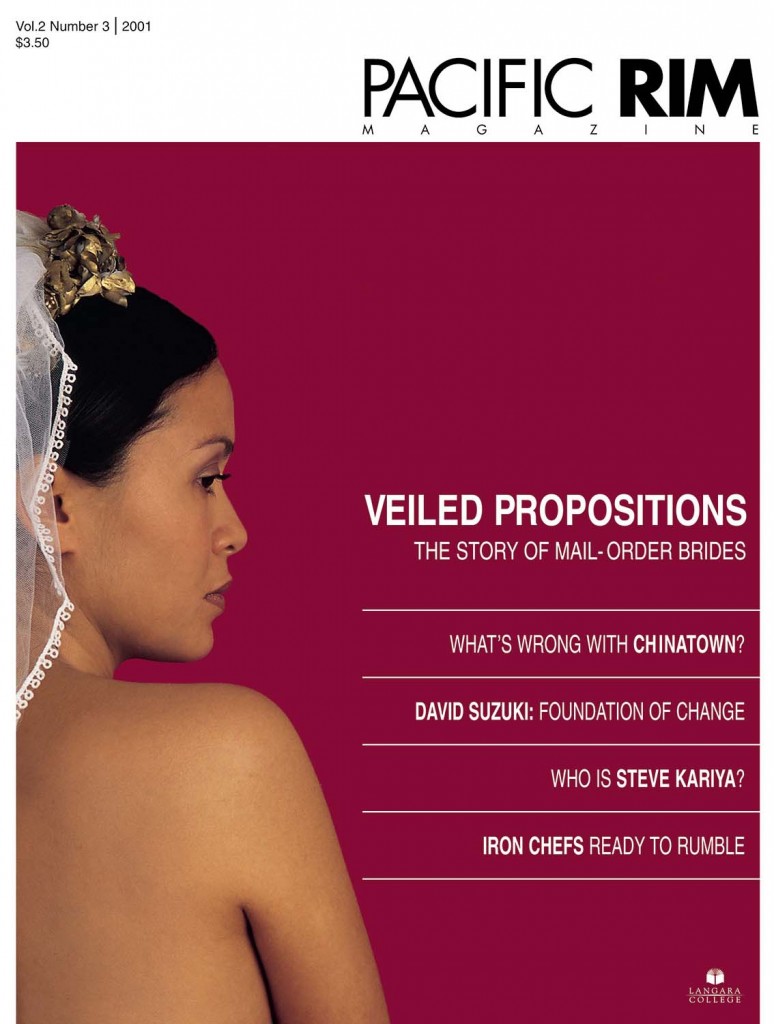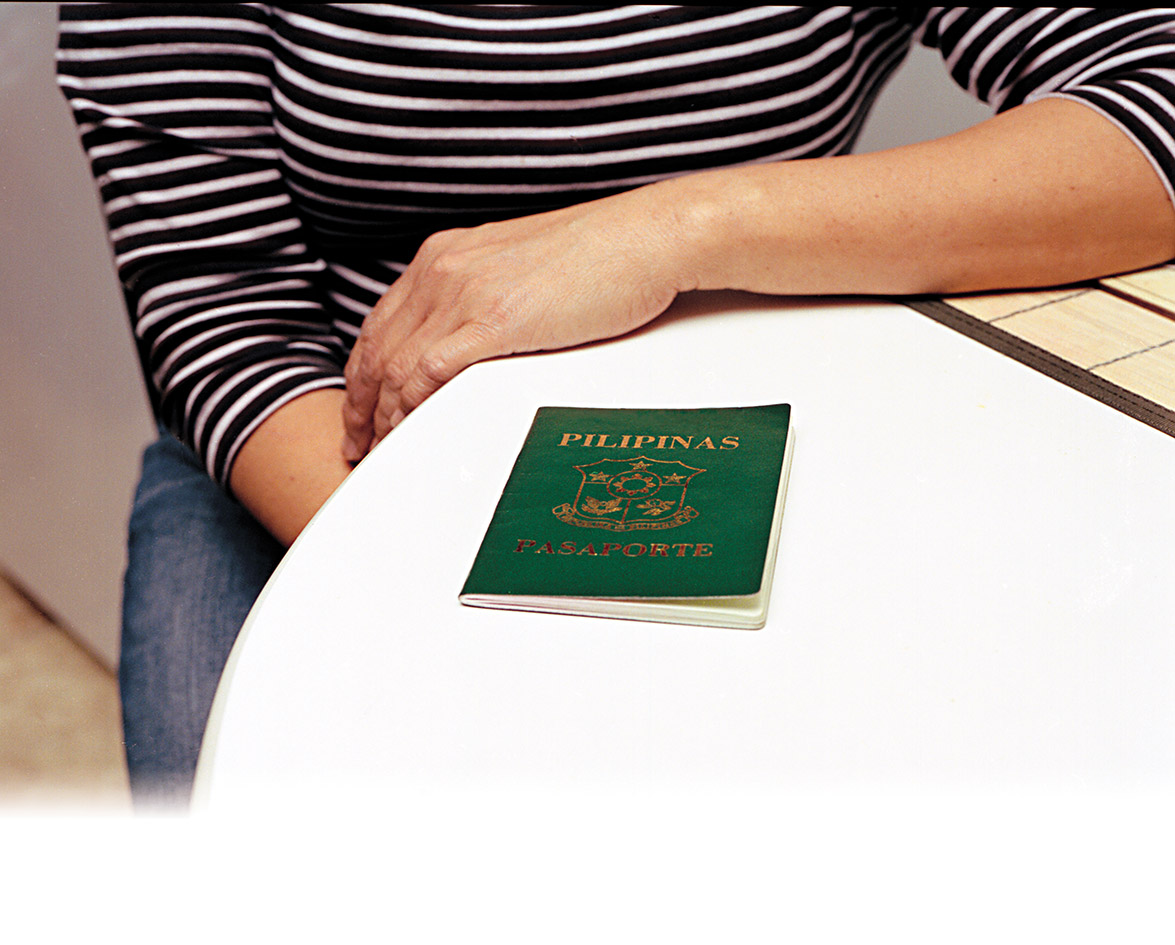The global industry of mail-order brides is booming. While a small number of agencies offer introductions to women from countries like Denmark and England, the majority of sites focus on women from third world countries like the Philippines. On one site, almost 4,000 Filipino names appear.
The mail-order bride agencies cater to the wants of men from industrialized nations such as Australia, England, the US, and Canada. The choices available for interested men are astonishing. Some mail-order bride agencies sell single or bulk packages of addresses of women looking for penpals. Other agencies peddle pre-packaged deals often including travel, hotel and even wedding arrangements. Both offer complete bios of the women, including detailed personal information such as eye colour, age, height, and even bra size.
Mail-order bride agencies play on the stereotypical exotic image of Asian women to lure men looking for “the ideal” wife. They often claim Asian women are traditional, subservient, loyal, and obedient. One American pen pal site, AsianFriendship.com, has these words to say:
“Filipino women are renowned for their beauty, femininity and traditional family values. They are sincere, devoted and believe in a lasting marriage…Filipinas stand out among Asian women in terms of charm, openness, intelligence, education, and loyalty…[they] value their husbands as their number one priority…they thrive on giving their man the attention and affection that is surpassed by none.”
This typifies Filipino-oriented mail-order bride sites. Some go as far as to paint North American women as egocentric, career-oriented and unable to provide a nurturing environment.
Along with sex websites, mail-order bride sites were pioneers of e-commerce. These matrimonial consultants offer everything from introductions to strategies for courting and techniques on how to correspond with Filipino women. Filipinas.org offers this advice:
- Tell them your intentions. For example, “I am looking for a nice Filipina to spend the rest of my life with and plan to visit your country in the next six months to find that special someone.”
- Don’t belittle their customs or their country. They are a proud people fully aware of their country’s shortcomings but don’t like foreigners telling them about it.
- Don’t worry about age differences. Many of these ladies will accept a husband 30 or even 40 years older than themselves. Just make sure the lady is mature and sensible enough to handle the age difference.
- If they ask for money dump them. It’s less pain in the long run.
It is not unusual for men to correspond with as many as 20 women at a time. Sites suggest the male clients keep a detailed log of correspondence so as not to confuse identities or stories. Occasionally the result is a good marriage. In this scenario the clients and the agency benefit. It is a win-win situation. Unfortunately, that is not the case for most. In an effort to minimize liability, the sites give their male clients standardized warnings on how to identify and avoid “gold-diggers.” But similar warnings are not given to the women. Many unsuspecting Filipino women find themselves married to a lie.

Teresita’s Story
“My husband and I wrote to each other for about four years. I met him through an agency in Mindanao. More or less 30 people from different countries wrote me. I thought before that he was a good person because he sends money to me…when I lost my job, he supported my family by sending me $200 each month. Because he was so good to me I agreed for him to sponsor me as a fiancé.
“At the start of our relationship, we were okay, but as time passed, we began having arguments with each other. My husband doesn’t want me to send money to my family in the Philippines. We have so many arguments when it came to that issue…. Luckily I got a job because he is not giving me any money at all. He said that I don’t need any money because there’s food in the fridge and that he’s buying me whatever I need.
“After three months of our marriage, our fights became more frequent. One day he physically hit me. One time he grabbed the phone and I bumped my head. There was a time when he threw a chair at me and it hit my head. When this happened, he apologized and said he didn’t mean it….Sometimes I am confused over whether or not I should leave him or not. I am afraid of what he might do to me. Sometimes, he says that he’ll report me to immigration if I leave. Many offer me their help if I decide to leave him, but I’m confused…”
This story represents the plight of many mail-order brides in Canada. It is the subject of groundbreaking research by the Philippine Womens’ Centre (PWC) of B.C. The study, Canada: the New Frontier for Filipino Mail-Order Brides, highlights the growing numbers of Filipino mail-order brides, their situations and their collective struggles.
Women interviewed for the project recounted similar stories of abuse and isolation. PWC found that 48 per cent of the 40 study participants lived in isolated rural areas. Most remain at home caring for their children or their husband’s children from a previous marriage. Despite the fact that 79 per cent of the women had the equivalent of a bachelors degree, those employed outside the home had menial service sector jobs, like babysitter, domestic worker or chambermaid.
Perhaps the most startling statistic gathered is that 49 per cent of the husbands interviewed were ten to 20 years older than their wives. Another three per cent of the couples have an age gap of 20 years or more. Cecilia Diocson, head researcher of PWC, is not surprised by the statistics.
The work of the PWC allows women to share their experiences. It empowers Filipino mail-order brides and breaks through the silence built on the fear of increased physical abuse or deportation. A few of the women who participated in the research project have since left their husbands.

The cause of the phenomenon of mail-order brides is twofold. First, the political and economic turmoil in the Philippines has resulted in institutionalized approval for the exportation of people. Under the Labour Export Policy of 1972, people became just another export commodity like sugar and rice. The Philippine government now depends heavily on the taxes and fees generated from migrant workers. This policy has resulted in the movement of over eight million Filipinos, the majority of them women, to 186 different countries worldwide. As a third world country, the Philippines is mired in massive unemployment with no opportunity for people, especially women. Over 80 per cent of the women studied by the PWC were from the poorest rural regions in the Philippines. In most cases, Filipino women are pushed abroad by the need to provide a livelihood for their families.
The seemingly endless flow of cheap, highly educated labour has influenced the perception of Filipino women in the eyes of Canadian society.
Diocson says, “Immigration policies like the 20-year-old Live-In Caregiver program have had a negative impact on the image and identity of Filipino women. The presence of Filipino women performing domestic work for 20 years in Canada has constructed an objectified, slave-like ideal of a Filipino women in the eyes of Canadian society.”
In 1991, Canada started importing highly educated professional women from third world countries as live-in nannies under the Live-In Caregiver Program. It was a cheap alternative to a national childcare program. Ten years later, Filipino women made up more than 80 per cent of all domestic workers in Canada. This has resulted in the stereotype of Filipino women being obedient, docile, subservient, and old fashioned. “That’s how they justify this cultural stereotype. That’s how they bridge the gap between servant and wife.” Diocson states that with mail-order brides, the husbands are “mostly middle aged, very dependent, have had previous relationships and even children. What is really on their agenda is to have a woman who can cook, wash their clothes, have children, and care for the children they already have. It’s not a question of love but entirely of self interest.”

Mail-order brides are just the newest chapter in a long history of Canadian immigration policy woes. The plight of these Filipino women underlines the critical and pressing need to reassess the existing immigration policies and the definition of sex trafficking in Canada and internationally.











